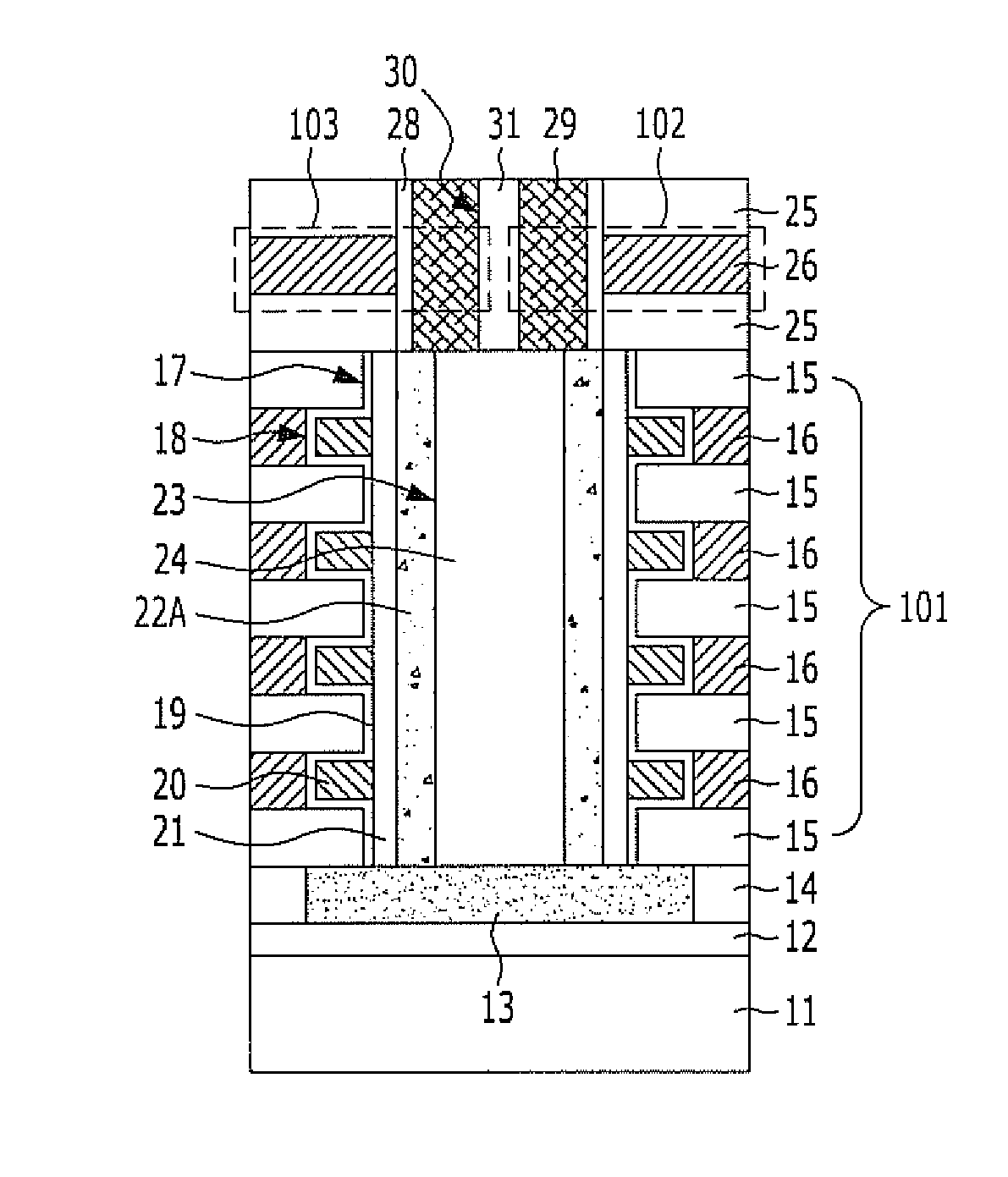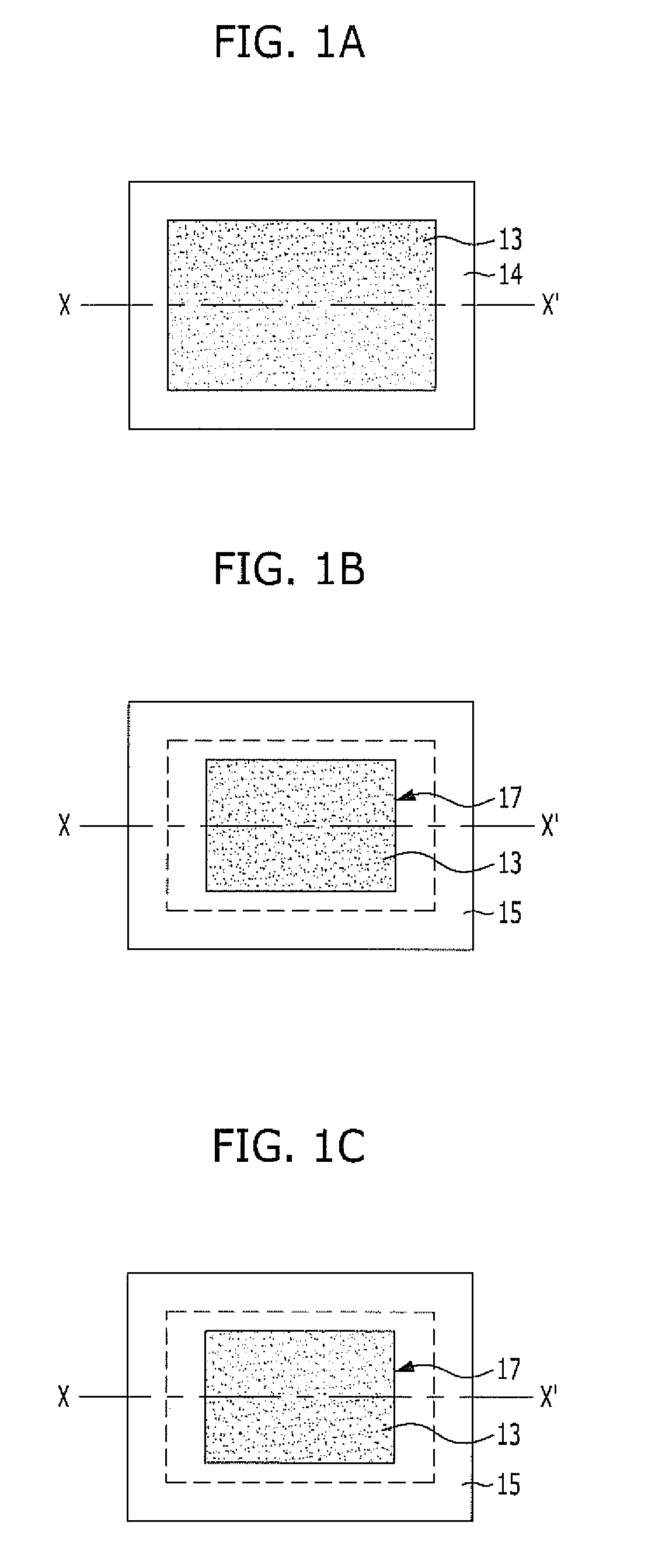Method for fabricating 3d-nonvolatile memory device
a memory device and non-volatile technology, applied in the direction of semiconductor devices, basic electric elements, electrical equipment, etc., can solve the problems of difficulty in realizing further increase in integration using lithography technology
- Summary
- Abstract
- Description
- Claims
- Application Information
AI Technical Summary
Benefits of technology
Problems solved by technology
Method used
Image
Examples
first embodiment
[0016]FIGS. 1A to 1G are plan views illustrating a method for fabricating a 3D-nonvolatile memory device in accordance with the present invention. FIGS. 2A to 2G are cross-sectional views taken along lines X-X′ of FIGS. 1A to 1G, respectively.
[0017]Referring to FIGS. 1A and 2A, a buried insulation layer 12 is formed on a substrate 11 (shown in FIG. 2A). The buried insulation layer 12 in FIG. 2A serves to electrically isolate the substrate 11 from a sub-channel 13 which is to be formed by a subsequent process. The buried insulation layer 12 may be formed of oxide.
[0018]An insulation layer 14 is formed on the buried insulation layer 12 to electrically isolate the sub-channel 13 from an adjacent sub-channel 13. The sub-channel 13 serves to electrically couple a plurality of main channels which are to be formed by a subsequent process. The sub-channel 13 may be formed of any one selected from the group consisting of a silicon layer, a metallic layer, and a nano tube. The metallic layer ...
second embodiment
[0038]FIGS. 3A to 3d are plan views illustrating a method for fabricating a 3D-nonvolatile memory device in accordance with the present invention. FIGS. 4A to 4D are cross-sectional views taken along X-X′ lines of FIGS. 3A to 3D, respectively.
[0039]Referring to FIGS. 3A and 4A, an insulation layer 44 is formed on a substrate 41 having a buried insulation layer 42 formed thereon. The insulation layer 44 serves to electrically isolate a sub-channel 43 from an adjacent sub-channel 43.
[0040]A stacked layer 201 is formed on the substrate 41 having the sub-channel 43 formed thereon. The stacked layer 210 includes a plurality of interlayer dielectric layers 45 and conductive layers 46 which are alternately stacked. The numbers of the interlayer dielectric layers 45 and the conductive layers 46 to be stacked may be adjusted according to the number of memory cells (MC) to be implemented.
[0041]The stacked layer 201 is selectively etched to form a first open region 47 exposing the sub-channel ...
PUM
 Login to View More
Login to View More Abstract
Description
Claims
Application Information
 Login to View More
Login to View More - R&D
- Intellectual Property
- Life Sciences
- Materials
- Tech Scout
- Unparalleled Data Quality
- Higher Quality Content
- 60% Fewer Hallucinations
Browse by: Latest US Patents, China's latest patents, Technical Efficacy Thesaurus, Application Domain, Technology Topic, Popular Technical Reports.
© 2025 PatSnap. All rights reserved.Legal|Privacy policy|Modern Slavery Act Transparency Statement|Sitemap|About US| Contact US: help@patsnap.com



